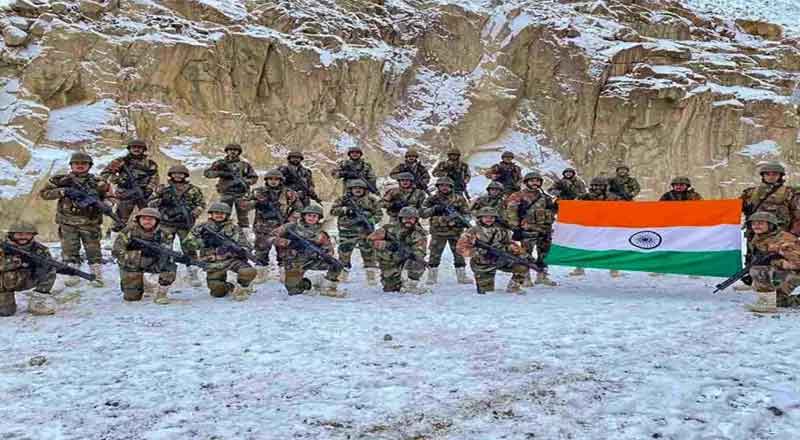- The Indian Air Force (IAF) pressed its entire transport fleet into service to carry over 68,000 troops, 330 infantry vehicles, and more than 90 tanks in addition to artillery guns to eastern Ladakh.
- The next requirement is strengthening the air defence network, which includes surface-to-air guided weapons and the radars to guide them.
- As per the existing agreements between India and China, the operation of fighter aircraft and armed helicopters is restricted to a distance from the Line of Actual Control (LAC).
- However, at the height of the standoff in eastern Ladakh, there have been several air violations with Chinese fighters coming close to the LAC.
- India and China currently have around 50,000 to 60,000 troops along the LAC in the region.
Over 68,000 Army soldiers, around 90 tanks, and other weapon systems were airlifted by the Indian Air Force to eastern Ladakh from across the country for rapid deployment along the Line of Actual Control (LAC) after the deadly clashes in the Galwan Valley, top sources in defence and security establishment said.
The IAF deployed its Su-30 MKI and Jaguar jets in the region for round-the-clock surveillance and intelligence gathering on the enemy build-up. The sources said the range of surveillance by Su-30 MKI and Jaguar fighter jets was around 50 km and they ensured that the positions and movements of Chinese troops were accurately monitored.
In view of the escalating tensions, the IAF had also deployed a sizeable number of remotely piloted aircraft (RPAs) in the region to keep a hawk-eye vigil on Chinese activities, they said.
The IAF aircraft airlifted multiple divisions of the Indian Army, totalling over 68,000 troops, more than 90 tanks, nearly 330 BMP infantry combat vehicles, radar systems, artillery guns, and much other equipment, they said.
The total load carried by the transport fleet of the IAF was 9,000 tonnes and displayed the IAF’s increasing strategic airlift capabilities. The IAF also quickly enhanced its air defence capabilities and combat readiness by installing various radars and bringing a range of surface-to-air guided weapons to frontline bases along the LAC in the region, they said.
The overall operation demonstrated the IAF’s growing airlift capability compared to what it was during ‘Operation Parakram’, said another source. Following the terrorist attack on Parliament in December 2001, India launched the ‘Operation Parakram’ under which it mobilized a huge number of troops along the Line of Control.
The government has been giving a major push to infrastructure development along the nearly 3,500 km long LAC following the eastern Ladakh faceoff. The Army has also taken a series of measures since the Galwan Valley clashes to enhance its combat capabilities. It has already deployed a significant number of easily transportable M-777 ultra-light howitzers in mountainous regions along the LAC in Arunachal Pradesh.
The Army has also powered its units in Arunachal Pradesh with a sizeable number of US-manufactured all-terrain vehicles, 7.62MM Negev Light Machine Guns from Israel, and various other lethal weapons.
The Indian and Chinese troops are still locked in the over three-year confrontation in certain friction points in eastern Ladakh even as the two sides completed disengagement from several areas following extensive diplomatic and military talks.
The ties between India and China nosedived significantly following the fierce confrontation in the Galwan Valley. Each side currently has around 50,000 to 60,000 troops along the LAC in the region.
The eastern Ladakh border standoff erupted on May 5, 2020, following a violent clash in the Pangong Lake area.
(With inputs from agencies)





